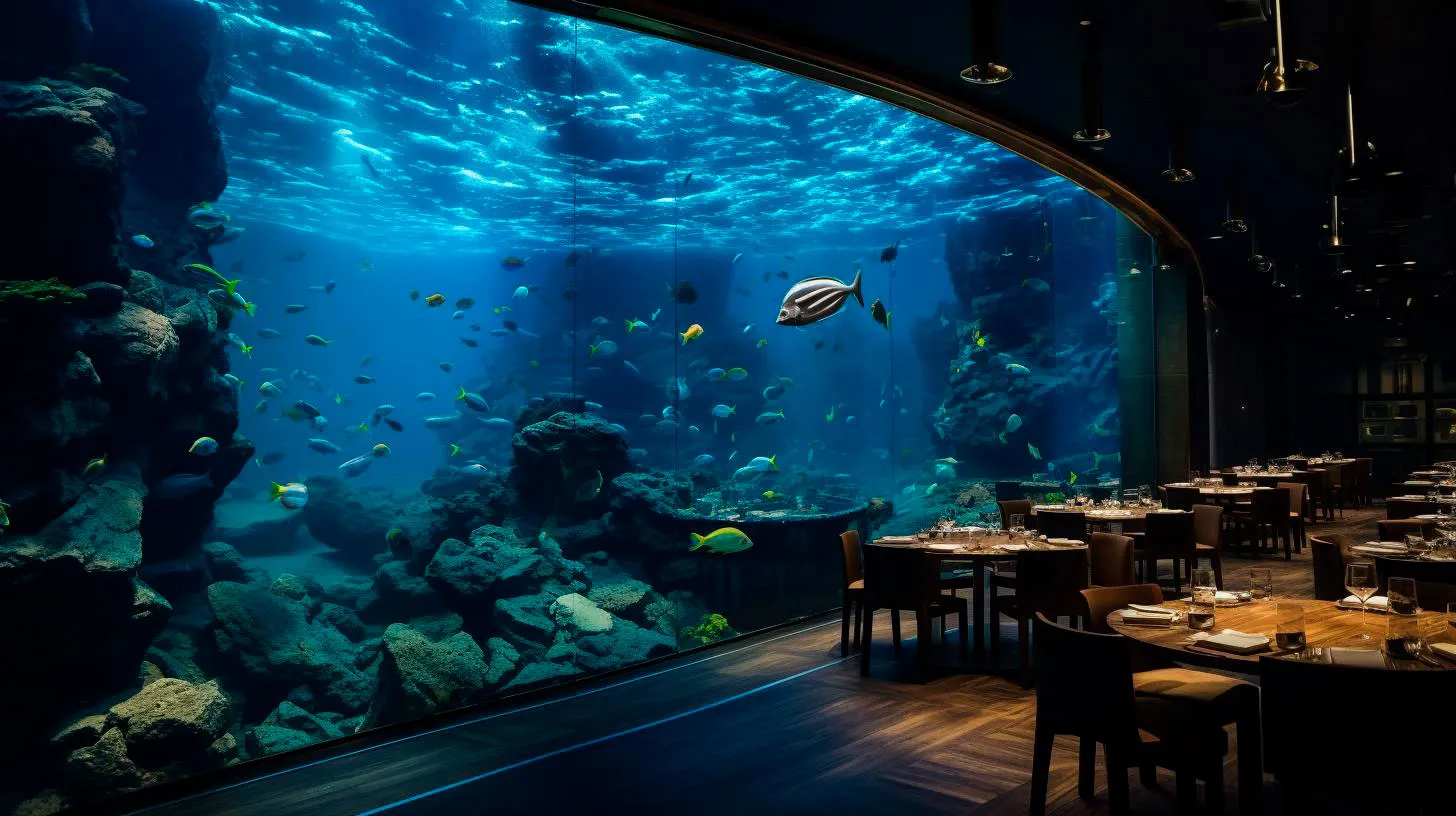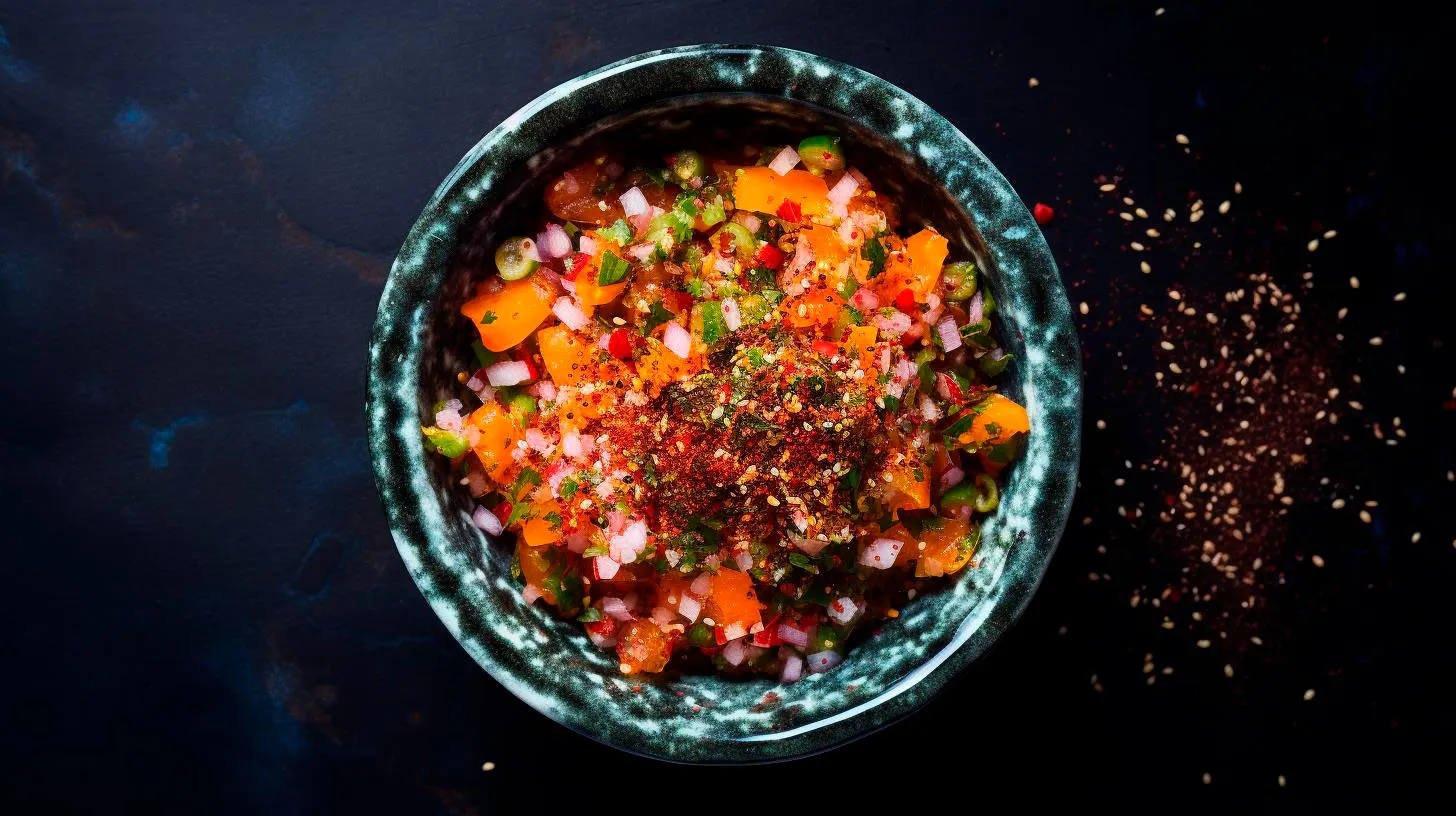Setting Sail with Sushi: A Culinary Journey
The Art of Sushi Making
Sushi is more than just a meal; it is an art form that requires skillful craftsmanship. Every single piece of sushi is meticulously prepared and arranged. The combination of fresh, high-quality ingredients and expert technique creates a symphony of flavors that delights the senses.
- Handcrafted Delicacies: Sushi chefs spend years perfecting their craft. They meticulously slice the ingredients, layer them with precision, and mold rice or wrap them with seaweed leaves.
- Visual Treat: Sushi is not only tasty but also visually stunning. Chefs create beautiful arrangements that are sure to impress diners. The colors, textures, and presentation make each sushi dish a feast for the eyes.
- Healthy Fare: Sushi often includes nutrient-rich ingredients like fresh fish, seaweed, and vegetables. It is low in calories, fat, and cholesterol while being high in protein and omega-3 fatty acids.
An Array of Flavors
One of the most remarkable aspects of sushi is the diverse range of flavors it offers. From delicate and mild tastes to bold and daring combinations, there is something for everyone. Here are some popular sushi flavors to whet your appetite:
- Maki Rolls: Maki rolls consist of seafood, vegetables, and rice wrapped in nori, a type of seaweed. With options like spicy tuna, California roll, or crunchy tempura, these rolls offer a satisfying combination of flavors.
- Sashimi: Sashimi is thinly sliced raw fish or seafood served without rice. It highlights the natural flavors of the ingredients and is often enjoyed with soy sauce and wasabi.
- Nigiri: Nigiri is a slice of raw fish or seafood placed on a small mound of rice, sometimes held together with a thin strip of seaweed. It allows you to savor the pure flavor of the fish.
Sushi Around the World
Sushi’s popularity has transcended borders, and it has made its way into the hearts of people worldwide. Today, you can find sushi restaurants in almost every major city, from Tokyo to New York and from London to Sydney. Here are a few interesting facts about sushi’s global reach:
- United States: The United States boasts more than 9,000 sushi restaurants, with California leading the way.
- Australia: Australians have embraced sushi, with the country having the highest number of sushi restaurants per capita outside of Japan.
- Brazil: Brazil is home to the largest Japanese population outside of Japan, and sushi has become a beloved dish there.
The Sushi Experience
When dining at a sushi restaurant, it’s not just about the food; it’s about the entire experience. From the moment you sit at the sushi bar or at a cozy table, you are transported into a world of flavors and culture.
- Interactive Dining: Sitting at the sushi bar allows you to witness the mastery behind sushi making. You can engage with the chef, ask questions, and learn about the different ingredients used in each dish.
- Omakase: Omakase is a traditional sushi dining experience where the chef curates a unique multi-course meal based on fresh, seasonal ingredients. It is a chef’s choice menu that takes you on a culinary adventure.
- Sake Pairing: Pairing sushi with sake is a match made in heaven. The delicate flavors of sushi complement the nuanced taste of sake, enhancing the overall dining experience.
Key Takeaways
Setting sail with sushi is not just about enjoying a plate of delicious food; it is also about immersing yourself in a rich culinary experience. Here are the key takeaways:
- Sushi is an art form with meticulous craftsmanship and stunning presentations.
- Sushi offers a wide range of flavors from maki rolls to sashimi and nigiri.
- Sushi has gained global popularity, with restaurants found in many cities worldwide.
- Dining at a sushi restaurant provides an interactive and immersive experience.
- Sushi pairing with sake can elevate your dining experience to new heights.
Embark on a culinary journey by setting sail with sushi. Indulge in the artistry, savor the flavors, and immerse yourself in a world of exquisite cuisine.
The Quest for Sustainable Seafood
In this blog post, we will explore the importance of sustainable seafood, the challenges faced in achieving it, and the steps individuals and businesses can take to support the cause.
The Importance of Sustainable Seafood
Sustainable seafood is crucial for maintaining the delicate balance of our marine ecosystems. Here are some key reasons why it matters:
- Preserving biodiversity: Sustainable seafood practices help protect the diversity of marine species, ensuring the future existence of different fish populations and their habitats.
- Conserving marine habitats: By implementing sustainable fishing and farming methods, we can mitigate the destruction of fragile marine habitats, such as coral reefs and seagrass beds.
- Protecting the livelihoods of fishermen: Sustainable practices ensure that fishing communities can continue to thrive, as they rely on healthy fish stocks for their economic well-being.
- Improving human health: Sustainable seafood contains higher levels of essential nutrients and lower levels of contaminants, benefiting both the environment and human consumers.
The Challenges
While the merits of sustainable seafood are undeniable, several challenges hinder its widespread adoption. Some of these challenges include:
- Overfishing: Overfishing, driven by growing global demand for seafood, has resulted in depleted fish stocks and imbalances in marine ecosystems. This makes it challenging to sustainably manage fish populations.
- Illegal and unregulated fishing: A significant portion of global fishing practices are unregulated, making it difficult to enforce sustainable fishing standards and prevent illegal activities.
- Consumer behavior: Many consumers are unaware of the concept of sustainable seafood or lack access to information that guides their purchasing decisions. This lack of awareness contributes to the perpetuation of unsustainable practices.
Steps Towards Sustainability
Though the challenges may seem daunting, there are several important steps individuals and businesses can take to support the quest for sustainable seafood:
- Choose certified sustainable seafood: Look for seafood products certified by reputable organizations like the Marine Stewardship Council (MSC) or the Aquaculture Stewardship Council (ASC). These labels guarantee that the seafood you purchase comes from sustainable sources.
- Support local, small-scale fisheries: Buying seafood from local fishers who employ sustainable practices helps promote responsible fishing and supports local economies.
- Spread awareness: Educate others about the importance of sustainable seafood and share information on how to make environmentally friendly choices. Social media, blogs, and community events can be valuable platforms for raising awareness.
- Advocate for change: Engage in discussions and support initiatives that promote sustainable fishing practices at local, national, and international levels. Write to policymakers, sign petitions, and join organizations fighting for the cause.
By taking these steps, we can contribute to the preservation of our oceans and ensure a sustainable future for generations to come.
Key Takeaways
When it comes to sustainable seafood, remember these important points:
- Sustainable seafood is crucial for preserving biodiversity, marine habitats, and the livelihoods of fishing communities.
- Overfishing and consumer behavior pose significant challenges to achieving sustainable seafood practices.
- Choosing certified sustainable seafood, supporting local fisheries, spreading awareness, and advocating for change are key steps individuals and businesses can take.
With these actions, we can embark on a quest for sustainable seafood that benefits both our environment and our own well-being.
Innovations in Responsible Fishing Practices
As the impact of these practices became more evident, the need for responsible fishing practices emerged. In recent years, innovative technologies and approaches have been developed to promote sustainability in the fishing industry. This article explores some of the most exciting innovations shaping the future of responsible fishing.
1. Satellite Monitoring Systems
Satellite monitoring systems have revolutionized the way fisheries are managed. These systems use satellite technology to track fishing vessels in real-time, enabling authorities to monitor their activities and ensure compliance with regulations. Some key advantages of satellite monitoring systems include:
- Improved enforcement of fishing regulations
- Greater transparency in the fishing industry
- Reduction in illegal, unreported, and unregulated (IUU) fishing
2. Big Data Analytics
The availability of vast amounts of data has opened up new possibilities for managing fisheries sustainably. Big data analytics allow researchers and policymakers to analyze trends, predict fish stocks’ behavior, and make informed decisions. Some significant features of big data analytics in fisheries include:
- Real-time insights into fish populations and migration patterns
- Identification of overfishing risks and early intervention
- Optimized allocation of fishing quotas
3. Fish Aggregating Devices (FADs)
Fish Aggregating Devices (FADs) are innovative tools used by fishermen to attract fish to specific areas, making fishing more efficient. FADs have become popular in many regions as they reduce fuel consumption and bycatch levels. Key takeaways of FADs include:
- Concentrated fish stocks for easier and more targeted fishing
- Reduction in bycatch, limiting the impact on non-target species
- Increased efficiency, reducing the overall environmental footprint
4. Selective Fishing Gear
Traditional fishing gears often result in high bycatch rates and damage to seabed habitats. However, selective fishing gear aims to reduce these negative impacts. Some notable examples include:
- Turtle Excluder Devices (TEDs) – Used in shrimp trawling to prevent sea turtle entrapment
- Escape gaps in fishing nets – Allowing undersized fish to escape and grow
- Bio-degradable fishing gear – Reducing the persistence of lost gear in the ocean
5. Aquaculture and Fish Farming
Aquaculture, or fish farming, has gained increasing attention as a sustainable alternative to wild-caught fish. This approach allows for controlled breeding, feeding, and harvesting of aquatic species. Some key advantages of aquaculture include:
- Reduced pressure on wild fish stocks
- Increased food production to meet the growing global demand
- Opportunities for coastal communities to diversify their income
Conclusion
Responsible fishing practices are crucial for the future of our oceans and the livelihoods of those dependent on them. The innovations discussed in this article represent just a fraction of the technologies and approaches being developed and implemented globally.
By leveraging satellite monitoring systems, big data analytics, fish aggregating devices, selective fishing gear, and aquaculture, the fishing industry can move towards a more sustainable future. These innovations offer promising solutions to tackle overfishing, minimize bycatch, and protect marine ecosystems for generations to come.
Exploring the Ocean Gastronomic Delights
The Richness of Seafood
Seafood has long been a staple in coastal cuisines, and with good reason. The ocean is teeming with a wide variety of fish, shellfish, and crustaceans that offer a range of flavors and textures. Whether it’s the delicate sweetness of fresh lobster, the buttery richness of seared scallops, or the firm flesh of a perfectly grilled salmon, seafood has the ability to transform any dish into a gourmet delight.
- Seafood is an excellent source of high-quality protein, essential omega-3 fatty acids, vitamins, and minerals.
- Research suggests that consuming seafood regularly can lower the risk of heart disease and improve brain health.
- Over 2.3 billion people rely on seafood as a primary source of protein.
The Versatility of Seaweed
While seafood often takes the spotlight when it comes to oceanic cuisine, seaweed is a rising star in the culinary world. Packed with essential nutrients, seaweed offers a unique umami flavor that adds depth to various dishes. From nori sheets used in sushi to kombu used for broths and kelp noodles as a pasta alternative, seaweed is incredibly versatile and can be incorporated into a wide array of dishes.
- Seaweed is an excellent source of iodine, which is crucial for thyroid function.
- It is rich in antioxidants, vitamins, and minerals, including calcium and iron.
- The global seaweed market is projected to reach $26.3 billion by 2025, driven by growing consumer awareness of its health benefits.
Sustainable Fishing Practices
While the ocean provides us with an abundance of culinary delights, it is essential to prioritize sustainable fishing practices to preserve marine ecosystems for future generations. Overfishing and destructive fishing methods can deplete fish stocks and harm the delicate balance of marine life. By adopting sustainable practices such as responsible fishing, selective gear, and marine protected areas, we can ensure the long-term availability of oceanic gastronomic delights.
- Sustainable fishing practices aim to ensure the long-term health and productivity of marine ecosystems.
- Certifications like the Marine Stewardship Council (MSC) help consumers identify sustainably sourced seafood products.
- Approximately 30% of the world’s fish stocks are overexploited, depleted, or recovering from depletion.
Key Takeaways
Exploring the ocean gastronomic delights offers a feast for the senses. From the richness of seafood to the versatility of seaweed, the ocean provides an array of flavors and health benefits. By embracing sustainable fishing practices, we can safeguard the future availability of these delicacies and ensure the health of our oceans.
The next time you savor a perfectly grilled fish or relish the taste of sushi, take a moment to appreciate the vastness of the ocean and the wonders it holds beneath its surface. Dive into the oceanic world of gastronomy and embark on a culinary journey that is as captivating as it is delicious.


